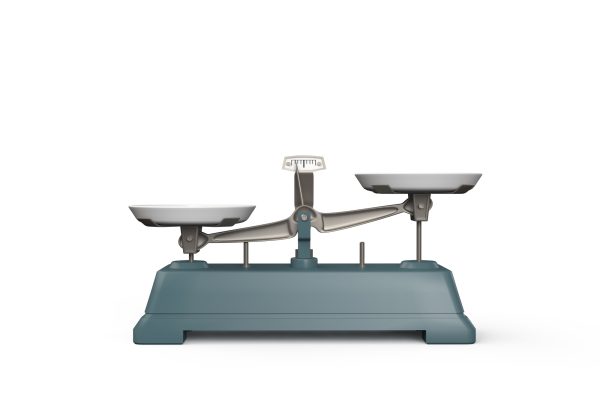Infrastructure and Productivity
President Biden recently announced the outline of his much-anticipated American Jobs Plan, commonly referred to as the “Infrastructure Bill”. Despite a name that aspires to benign bipartisanship common to pieces of legislation, it has unsurprisingly failed to avoid the level of debate and scrutiny one would expect of a $2.3 trillion government spending package. One question that seems to permeate the discussion is what types of infrastructure projects will contribute to economic growth and therefore deserve investment. I thought it might prove instructive to examine two infrastructure transformations from America’s past to glean exactly how investment in infrastructure engenders advances in productivity and thus is so important to economic growth.
Infrastructures’ contributions to productivity growth are most prominent when they unlock the potential of a novel technology. Forecasting productivity solely from the pace of new inventions and the level of patents has always proved challenging. Often with truly transformational innovations, existing infrastructure is inadequate to harness their full potential. Only once infrastructure able to capitalize on an innovation is put in place can that innovation percolate up through the economy to add to productivity. According to economic historian Paul David of Stanford University, writing in 1989, it often takes a number of decades for major innovations to be applied in a manner that increases output per hour. One stark example of this interplay between technology and infrastructure is the electrification of America’s factories.
As I noted in The Age of Turbulence, following Thomas Edison’s spectacular illumination of lower Manhattan in 1882, it took some four decades for even half of the nation’s factories to be electrified. Electric power did not fully exhibit its superiority over steam power until a whole generation of multistory factories was displaced after World War I. David explains vividly what caused the delay. The best factory buildings of the day were poorly designed to take advantage of the new technology. They ran on so-called group drives, elaborate arrangements of pulleys and shafts that transferred power from a central source—a steam engine or water turbine—to machines throughout the plant. To avoid power losses and breakdowns, the lengths of the shared drive shafts had to be limited. This was best achieved when factories rose vertically, with one or more shafts per floor, each driving a group of machines.
Simply substituting large electric motors to power the existing drive shafts, even when feasible, did not improve productivity very much. Factory owners realized that electricity’s revolutionary potential would require far more dramatic change: Power delivered by wire made central power sources, group drives, and the very buildings that housed them obsolete. Because electricity opened the way to equipping each production machine with its own small, efficient motor, sprawling single-story plants came into vogue. In them, machinery could readily be arranged and rearranged for greatest efficiency and materials could be moved about with greater ease. But abandoning city factories and moving to the wider spaces of the countryside was a slow, capital-intensive process. That was why, David explains, electrifying America’s factories took dozens of years. But eventually millions of acres of one-story plants embedding electric, motor-driven power dotted America’s midwestern industrial belt, and growth in output per hour finally began to accelerate.
While the electrification of America’s factories is a remarkable instance of private industry taking charge in transforming the country’s infrastructure to great economic gain, it should not be forgotten that some of the largest and most vital infrastructure projects in the country’s past could not have been achieved without support from the government. Indeed, some infrastructure projects are of a scale so large that the capital required up front is simply too much for the private sector to risk despite the significant returns to the overall population. One salient example of this dynamic is the construction of the transcontinental railroad.
The first transcontinental railroad was built between 1863-1869, connecting the existing eastern U.S. rail network at Council Bluffs, Iowa to the Pacific Coast in San Francisco, California over public lands provided by extensive government land grants (130 million acres from the federal government and about 50 million acres from state governments). The project was financed by both federal and state government subsidy bonds as well as by bonds issued by the 3 private companies tasked with the project (Central Pacific, Union Pacific, and some contribution by Western Pacific). The completion of the transcontinental railroad reduced the time it took to get across the country from six months to six days. It encouraged the growth of American business by allowing goods to be shipped from coast to coast. It allowed for a production boom as resources from the mid- and western parts of the country were able to be employed in production.
From 1870 onward, railroad companies added more than thirteen miles of track every day for the next forty years, increasing total mileage by a factor of five, and ensuring that, by 1917, America possessed 35 percent of the world’s railway mileage. Productivity gains from the development of America’s transportation infrastructure were significant. Railroads reduced the cost of moving products around: according to one estimate, by 1890 the cost of rail freight was $0.875 a ton-mile compared with $24.5 per ton-mile for wagon freight, a reduction of 96 percent. They also boosted reliability: you could more or less guarantee that you, or your products, would be transported on time.
The past has shown that transformational changes in infrastructure can sometimes be accomplished by the private sector alone, as in the case of electricity in America’s factories. Other projects, like America’s railroads, require cooperation between the public and private sectors. While the details of Biden’s legislation will undoubtedly change over the course of congressional debate, it is clear investment in infrastructure is vital to productivity growth and a strong economy.




LATEST ARTICLES